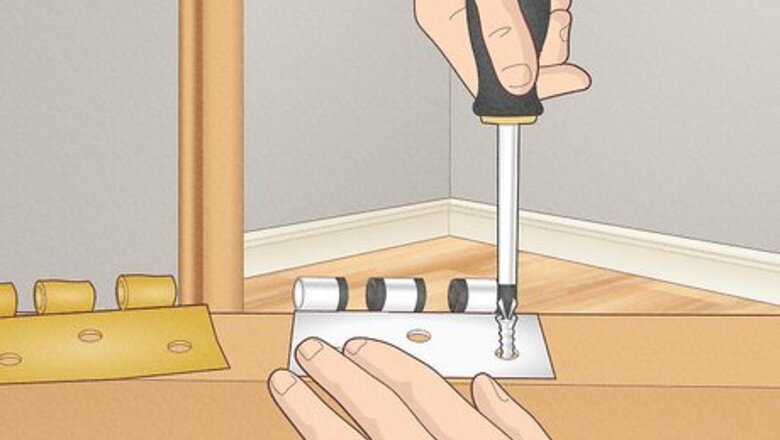
views
- Faulty hinges can throw off your door’s alignment and cause it to slam shut. Unscrew and replace your hinges one at a time to prevent slams.
- Cushion your door slams by cutting felt or foam and gluing pieces inside your door frame. This soft material will absorb the shock and reduce the noise.
- Place a door wedge or slide fabrics (like clothes or towels) under your door to keep it in place and stop slams altogether.
- Tie a rubber band on either side of your door knob for a cost-effective method to lessen the impact any time your door swings shut.
Replace the door hinges.
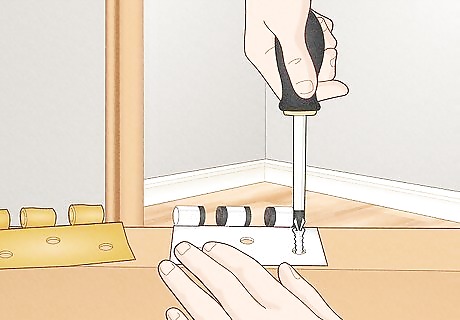
Wear-and-tear on a door’s hinges can throw off its vertical alignment. Plus, a poorly aligned door will slam shut any time air blows through. To prevent door slamming (not to mention moisture, mold, and other things that may seep into your door’s hinge gaps), use a screwdriver to unscrew each of your door hinges and replace them with an anti-slam or hydraulic hinge, which are called self-closing hinges, one at a time. Use a ruler or level to make sure the new hinges are perfectly aligned and sand the wood beneath the keying if it’s become frayed.
Use door frame weatherstripping.
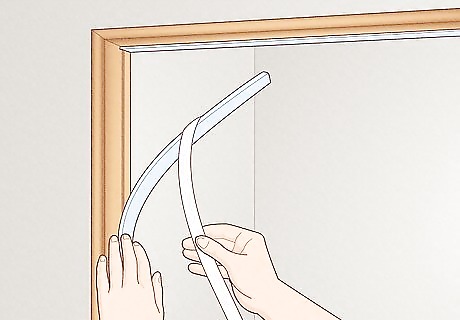
Weather strips help seal a door so it closes gently and quietly. To install a weather strip, measure the length of your door frame and cut a slice of weather stripping foam at the same length. Line the weatherstripping foam up to your door frame and seal it inside with external glue, or, if the foam itself has a sticky side, by peeling and attaching. Having weather strips on your door frame will muffle the slamming noise and decrease damage to your infrastructure. Add weather strips to window sills to help prevent heavy windows from slamming.
Add pinch guards.
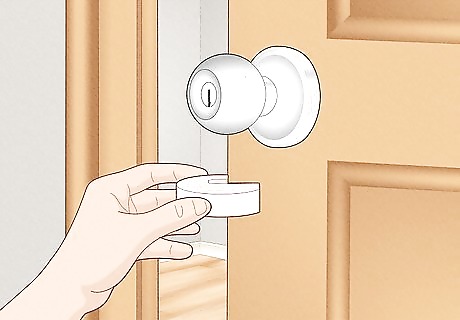
Slide these u-shaped devices over your door or door frame. Their crescent-like structure will serve as an obstacle for your door to slam all the way, and their soft foam material will eliminate the loud banging noise. As their name suggests, pinch guards also mitigate the risk of injury from accidentally getting your fingers pinched between the door and door frame.
Put a door stopper on your door.
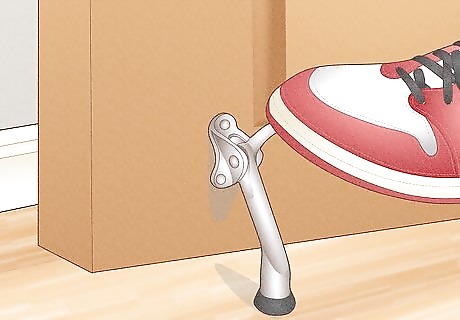
Kick-down stoppers attach to your door and prevent slamming via friction. With a strong, usually rubber base, the door stopper keeps the door in place, and its weight resists wind anytime a door tries to blow closed. To install a door stopper, measure the distance from the ground to the length of your door stopper. Mark this spot and drill a small hole here to place your door stopper. Then, carefully screw in your door stopper and kick downward!
Install a door silencer.
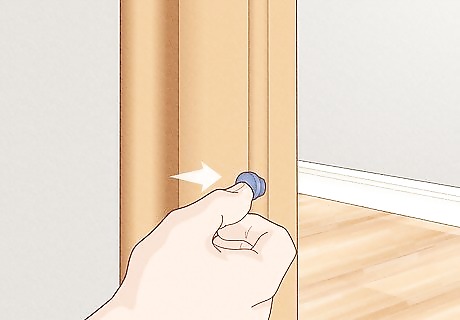
Door silencers muffle the noise when a door shuts. Made of heavy-duty rubber, door silencers work by stealth with a cone and small circular base preventing any harsh slams. To install a door silencer, drill a ⁄4 in (0.64 cm) hole in your door frame to insert the cone. The cone will hold the circular base in place inside the door frame. Any time a door tries to slam shut, the rubber will then absorb its shock.
Cushion your door frame with felt pads.
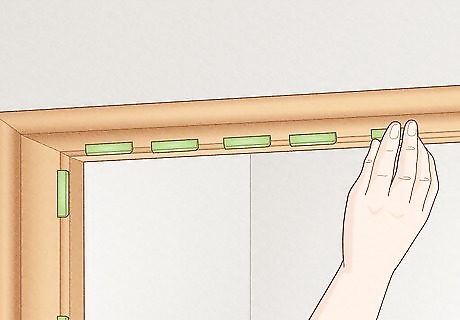
Felt pads are great at absorbing the sound vibrations of door slams. Easy and cost-effective, cut a piece of felt into small pads that can fit within your door frame. Then, attach the felt inside the frame using glue. For optimal soundproofing, cover the top of the door frame and bottom corners in felt.
Install a door closer.
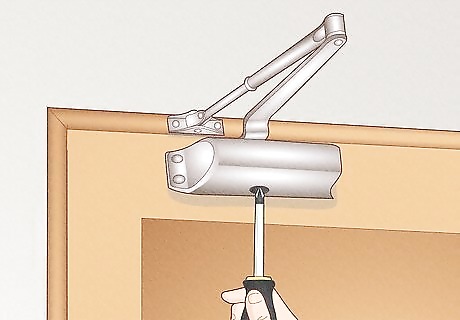
Automatic door closes attach to the top of your door to prevent slamming. Using air compression and/or hydraulic fluid (depending on the type of door closer), automatic door closers help regulate your door’s pressure so it’s impossible for it to swing shut quickly. To install a door closer, drill holes near the top of the door on the side of the direction the door swings in. (Measure these holes based on the size of your door closer.) Then, screw in the door closer inside the door jamb. While a little pricey (usually $100-200), door closers are arguably the most effective long-term method to prevent door slamming. Follow the instructions that come with your door closer regarding the best location to screw it in. You’ll often see door closers in schools and offices, but they're great for residential use, too.
Add a door wedge.
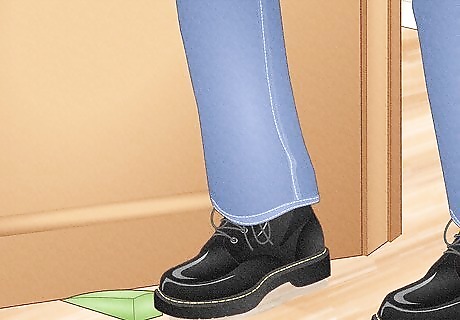
Door wedges are great for keeping doors open. Triangular and usually made of hard material, using a door wedge is easy. Slide the wedge under the doorway with the thinnest part facing the door. The large part of the wedge will block the door’s path and prevent it from moving. Place a door wedge under a door at any angle to prevent slamming or keep the door wide open.
Put fabrics under your door.
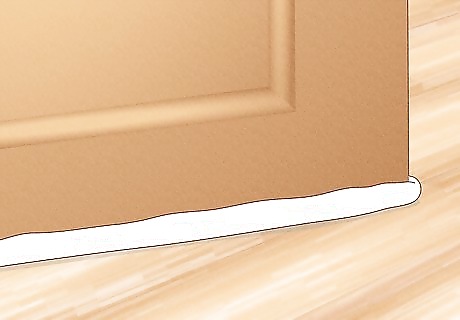
Roll up some clothes or a towel and gently slide them under your door. The weight and soft cushion of these fabrics will stop the door from swinging shut (or at least slow it down and prevent it from slamming too hard).
Replace your door knob.
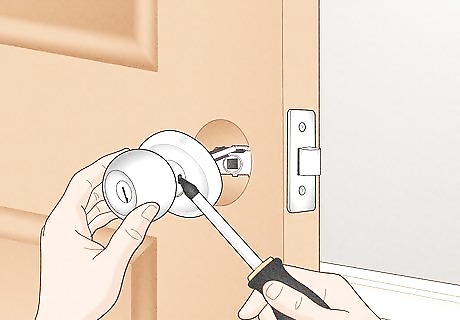
If even one part of your knob is faulty, it can screw up the entire door. Not to mention, it can be dangerous if your damaged door knob prevents a space from locking properly. To install a new knob, simply detach the old knobs by loosening their screws and sliding them off the door using a flat-head screwdriver. Then, align the new knobs of your choosing and carefully screw them in with the locking mechanism on your desired side.
Use rubber bands.
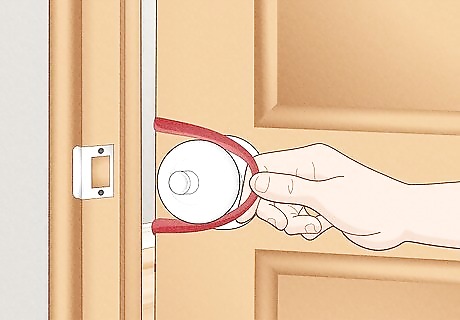
Rubber bands are the cheapest way to reduce the noise of door slams. Grab a thick, stretchy rubber band and place one end of the band around your door knob. Then, extend the band so it reaches all the way to the other side of the door. Attach the other side to that knob. The thick rubber will now act as a cushion any time the door impacts the frame.















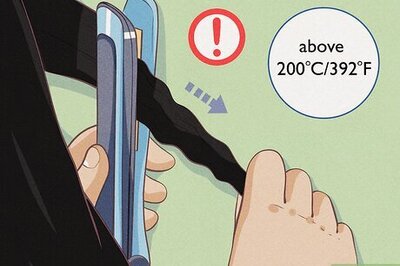
Comments
0 comment